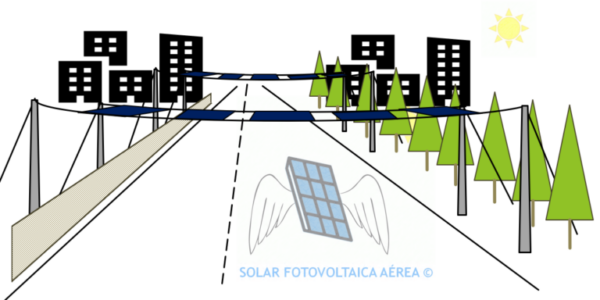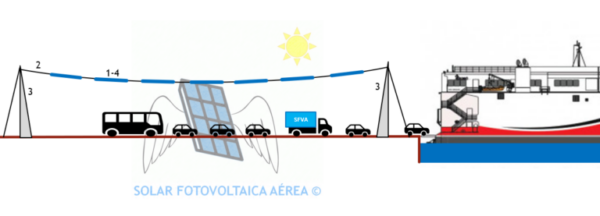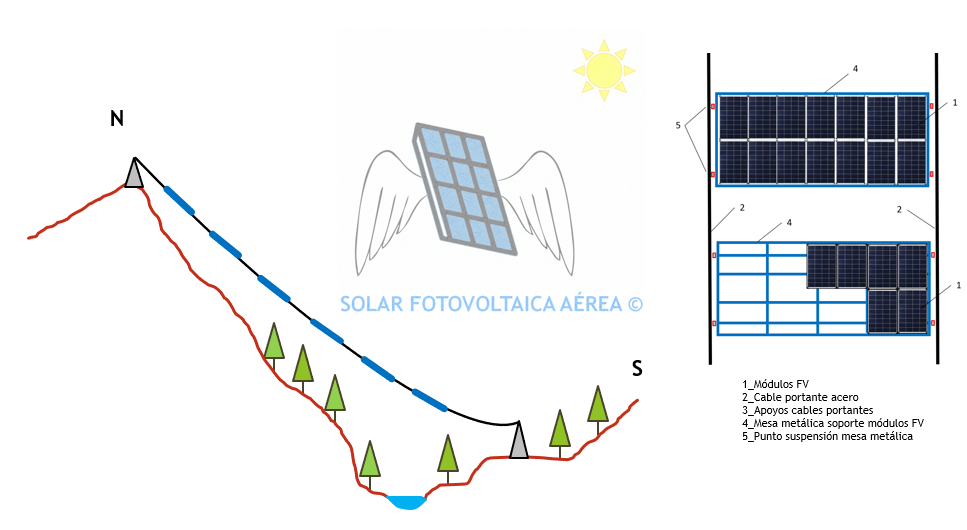From pv magazine Spain
Spanish mine engineers José Luis Peón González and José Raúl González Ruiánchez have developed a new PV system for applications in areas with limited space.
“Our system uses the third dimension (Z) to escape the limitations imposed by the terrain: not only derived from its scarcity, but also from the orography, or the visual impact of a solar plant on the landscape,” Peón González told pv magazine.
The engineers claim that their solution arose from the fusion of two mature technologies – the construction of suspended cable structures and photovoltaics.
“We created a new way of deploying projects that can reach places where no one had thought of,” they said.
In their proposed system configuration, the solar panels are mounted on a metal structure, which is suspended on at least two steel load-bearing cables whose ends are supported by a structure, metal or concrete, and anchored to a rocky slope or to the ground.
“We currently have two models approved by the Spanish Patent and Trademark Office (OEPM), and in view of the great development of agrivoltaics in Germany, France and Italy, we have requested a European Patent,” they explained, noting that system can reportedly bridge large openings and unevenness, depending on the slope and the orientation of the cables.
Popular content
“In addition to requiring fewer earthworks, our system makes it possible to take advantage of the existing large surfaces, for example, in the port system to generate energy near consumption points and would make the construction of new high-voltage lines less necessary,” González Ruiánchez said. “Our installation can also be adapted to help reduce dust emissions in the handling of solid bulk, and could also generate shaded areas.”
The system could also serve as an alternative to floating PV in complex areas, as it would not be affected by waves, and it does not need intermediate supports.
In addition to the minimal impact on flora and fauna and the possibility of its deployment in mountainous areas, the fact that the installation is elevated means that no fencing or surveillance is necessary. It can facilitate the recovery of areas affected by mining operations, while reducing restoration costs.
“It also makes it possible its deployment on already occupied surfaces, which cannot be drilled or do not support additional loads,” they concluded.


This content is protected by copyright and may not be reused. If you want to cooperate with us and would like to reuse some of our content, please contact: editors@pv-magazine.com.



great ideas need to fly.
Cables and PV have been tried many times.
In general, cables are very difficult to deal with.
We will wait to see the feasibility and the LCOE attached.
In any cases you will need huge fondations.